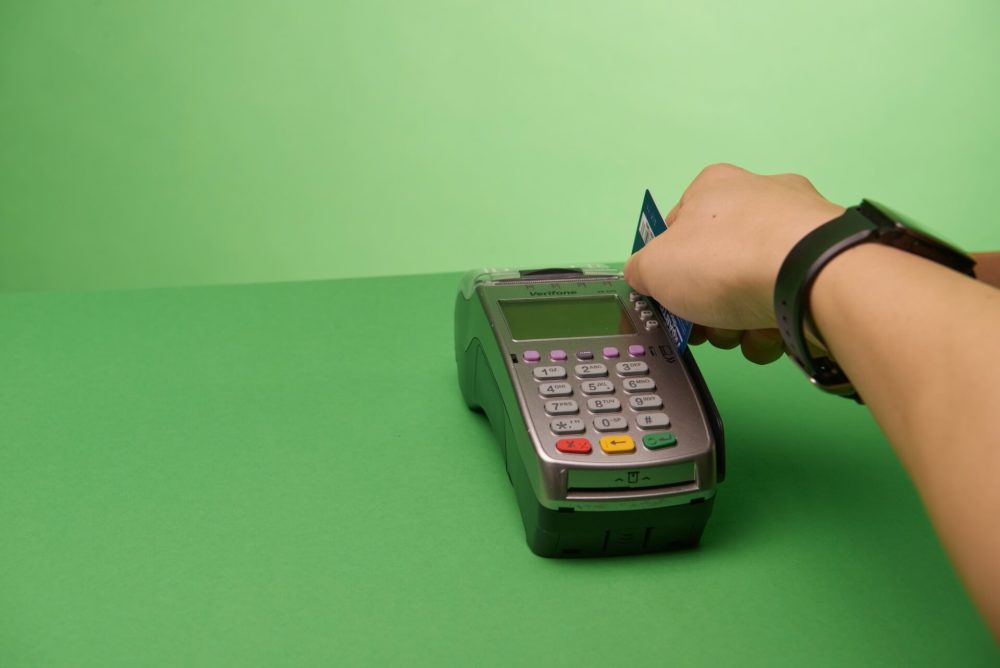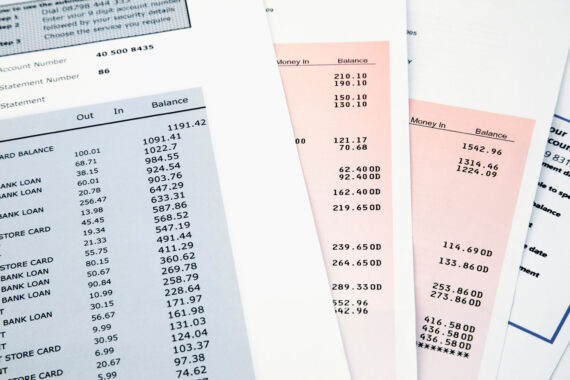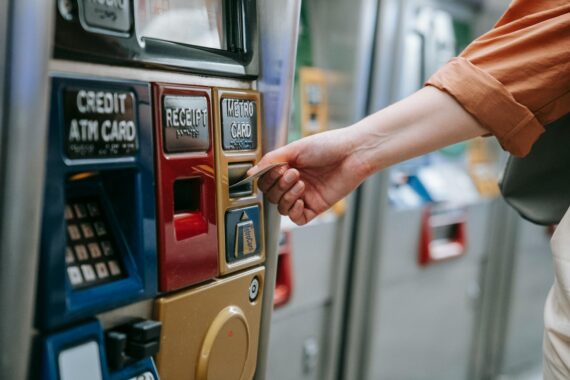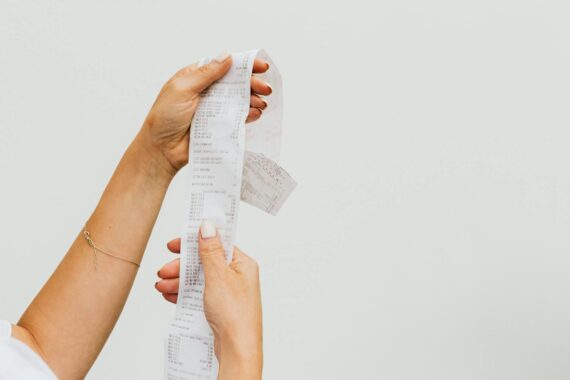Have you been wondering – what’s a CVV on a debit card and how do I look for one on my own piece of plastic? We will share with you everything about these CSC numbers and how merchants can use them to prevent fraudulent transactions when dealing with payments made over the phone, online payments, and invoice payments. CSC codes are something sellers should always request so they can know for sure that the rightful cardholder has made the purchase.
So, what is CVC on a card? It stands for ”Card Verification Value,” and it’s a three-digit number on Discover, MasterCard, and Visa-branded credit and debit cards. However, on the American Express-issued cards, this code is represented by a four-digit number. These codes are also called CVC (Card Verification Code), CSC numbers (Card Security Code), and CVV2 numbers. The purpose of the number is to validate the card in order to prevent credit card fraud.
Why Do Merchants Have to Know What’s a CVV on a Debit Card?
If you are a business owner or simply an individual with a small business idea who wants to sell goods and services online, it is of the utmost importance to invest in merchant services that will process each payment transaction on your behalf. When selling something via an online store, the merchant can fall victim to fraudulent use of cards because the buyer is not present during the transaction.
eCommerce options have expanded significantly over the past few years, and CNP (card-not-present) fraud is expected to increase by 15% in the following years. In order to finally stop or at least slow down online scammers, CVV codes can be of great help with eCommerce payment options. But, what is a CVV exactly?
The numbers on the card’s back act as a security measure during an online transaction since the business owner has no way of checking the client’s signature. The best way you can make sure you are not dealing with scammers is to request the CSC. The buyer then has to type in three or four digits and prove to you that the payment is legitimate.

How to Locate the CVV Number on Credit Cards?
Looking for the CSC numbers is quite simple and it won’t take long. First, turn the plastic over and look at the back. There you should see a three-digit code preceded by the last four digits of the card number. Or, perhaps the entire 16 digits are visible, and the last three should be the CSC. Note that, on AmericanExpress cards, you should search for the numbers on the front side. They are placed to the right, just above the main card’s number.
What Are the Components of a CVV Number?
The integral components of CSC codes include:
- A magnetic strip that covers the first parts of the CSC code – As soon as the magnetic strip is detected by a magnetic reader machine, the information can be read. Therefore, it is vital to know that it contains essential and unique information about debit cards.
- The second integral components – These are the three or four-digit codes located below the magnetic strip. If the buyers want to carry out a transaction online, they must read the numbers and type them in the correct form to proceed with the purchase.
How Does a CSC Code on a Debit Card Work?
When the cardholder enters the CSC when purchasing anything online, the transactions verify the code right away to determine that the card is activated and currently used by an authorized cardholder. Businesses and retailers cannot record the numbers or the information since it can be used for identity theft. In the event of scams and hackers gaining access to retailers’ websites and databases, CSC codes cannot be stolen.
Sellers who are wary of security breaches can request the codes only for the initial purchase but not for subsequent ones. This will lower the risk of identity theft and security breaches. Merchants who want to increase the safety and efficiency of their online business should hire credit card processing companies that will handle all the issues and problems associated with cashless payments. The eCommerce merchant account providers can offer excellent credit card fraud prevention so the online business can function without any problems.
How CSCs Stop Scammers?
Scammers usually find various ways to get the long numbers or expiry dates that are featured on the plastic. They tend to use skimmers on payment terminals or ATMs. These are specific devices fraudsters use to get your information. However, skimmers are not available when the buyer is shopping online. Without CSC numbers, no one can steal your account info or money. If the retailers want to be PCI compliant, they cannot keep any CSC codes or any customers’ data. Since the CSCs are contained in the magnetic strip or the chip, fraudsters cannot get a hold of any private account info if the merchant is PCI compliant.
A reliable credit card processing company can ensure that the merchant stays PCI compliant and that every transaction can be carried out without any fear of possible thefts and scams. If you want to learn a bit more about this topic, check out the video below to learn how to spot skimmers at ATMs.
Not Requesting CSC Numbers is Harmful to Merchants
Different types of businesses process transactions in various ways. Therefore, not all merchants request CSC numbers since they are worried that they might end up losing potential customers. However, eCommerce merchant account providers would advise against this practice since avoiding security breaches should be the business owner’s primary responsibility. If you want to find some kind of middle ground, you should opt for requesting CSC numbers for the clients’ first purchase. Avoiding scammers and hackers is of utmost importance because the retailers will be held accountable for some or all the damages and receive penalties in the event of data theft.
How Should the Codes on Credit or Debit Card Be Processed Properly?
Once the merchants receive the CSC numbers from the buyers during the transaction, they send all the information such as the cardholder name, the card’s number, expiration date, CSC, and address to the acquiring bank, which can authorize the transaction. The retailer should specify whether the CSC is included in the authorization request.
The acquiring bank can proceed to deliver the request to the appropriate association, such as American Express, Visa, and MasterCard, depending on which card the buyer uses. The association can then send the request to issuing banks or entities, which will send back a response. The CSC response code can then be sent back. In case the CSC numbers are not the same, the merchant is free to pull out of the transaction.

How Should the CSC Numbers Be Protected?
In order to safely purchase goods and services on the Internet, it is essential that the cardholder knows how to protect the CSC. Financial privacy can only be protected if the cardholder and the merchant do their part so as to safely carry out the transaction. So how should the CSC be protected?
The Buyer Shouldn’t Disclose the CSC to Anyone
The first and most important tip is to always keep your CSC a secret. The cardholder shouldn’t disclose any information or details about the codes or data even to trusted people, particularly not over the phone. Legitimate companies would never call and request this over the phone, only fraudsters.
It would be safer to simply avoid using debit cards during a transaction. If a fraudster gets a hold of CSC and other details, they will be able to completely drain the funds from the cardholder’s bank account. The best alternative is to use credit cards because the thief can then steal from the company. The cardholder only has to inform the company of their actions and dispute the purchases made by the thief. Another option would be to cancel the purchase. Additionally, reliable enterprises should inform the customers of their processing methods and security measures so that the customer knows that there are measures taken to ensure that the theft doesn’t happen.
Trustworthy Sellers Would Never Request a CSC in an Email
The cardholder should never send codes or data over email. Emails can be hacked easily, particularly if the cardholder is using an unsecured Wi-Fi network. Be aware of any sites that don’t begin with “https” since they can be hackable.
Reliable Merchants Won’t Ask for Pictures of the CSC
Merchants and reputable companies would never request cardholders to take a picture of the CSC. Anything on the plastic can be used by fraudsters, so it is unsafe to take a picture of the 13-digit number, too. Some customers think that concealing most of the numbers would be safe, but that is not the case. There is software that can determine what most undisclosed digits are, so cardholders should avoid taking any kind of photos.
What Happens When a Customer Wants to Pay and Has to Swipe the Plastic?
When the plastic has to be swiped on a POS machine so that the transaction gets authorized, the customer shouldn’t be worried about theft. Details and CSC cannot be stored when the customer swipes. Still, since the customer is present at the moment of the transaction, they should keep an eye on the plastic and how the cashier uses it. Any information read by the wrong person can be used to hack into the cardholder’s account.

What Is the Difference Between a CSC and a PIN?
There are specific differences that separate CSCs and PINs. CSCs can be either three or four-digit numbers, but PINs are made up of four numbers. For instance, the CSC numbers can only be assigned by the bank, but the PIN can be set by the client. Also, unlike CSCs, PINs can be changed and used online as well as offline. CSCs are needed for online transactions and are unique for all cardholders.
How Does CSC Help Retailers With Chargebacks?
With excellent credit card processing services for small businesses as well as big enterprises, merchants can succeed at correctly using CSC to stop chargebacks. Chargebacks occur when the clients opt not to go through with the payment, mostly because of dissatisfaction with the shipping process or the product. Merchants can lessen the negative effect of the chargeback on their business by making use of the CSC. By proving that the client authorized the recurring payments with the CSC, which only the cardholder can have, the merchant wouldn’t be liable for the refund.
The Bottom Line Is that CSCs Are Necessary for Online Shoppers and Merchants
The most common mistake business owners make is not requesting CSCs for fear of losing their customers. Every entrepreneur should search for merchant services credit card processing and invest in providers who would explain how a business can grow but still keep the safety of the clients as its priority.
Since you now know what a CVV number is, you might start looking for the best company that would control your transactions. Contact us at Merchant Chimp and get all the necessary details. We’ll be more than happy to provide you with everything you need to know about how CC processing works. What is more, we can make sure that your business doesn’t lose from 20% to 50% on different fees. Reach out, and you won’t regret it.








